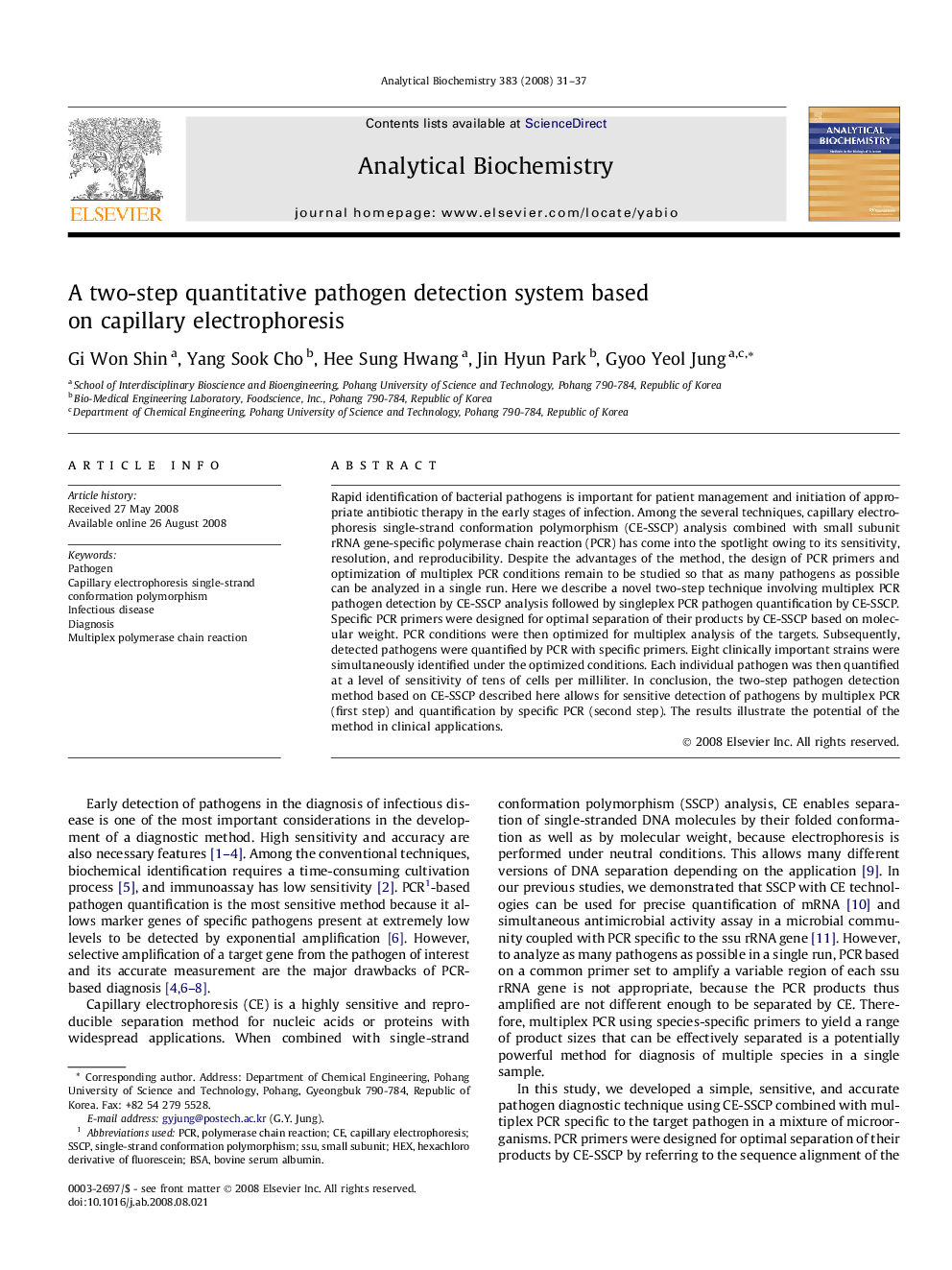| Article ID | Journal | Published Year | Pages | File Type |
|---|---|---|---|---|
| 1175125 | Analytical Biochemistry | 2008 | 7 Pages |
Rapid identification of bacterial pathogens is important for patient management and initiation of appropriate antibiotic therapy in the early stages of infection. Among the several techniques, capillary electrophoresis single-strand conformation polymorphism (CE-SSCP) analysis combined with small subunit rRNA gene-specific polymerase chain reaction (PCR) has come into the spotlight owing to its sensitivity, resolution, and reproducibility. Despite the advantages of the method, the design of PCR primers and optimization of multiplex PCR conditions remain to be studied so that as many pathogens as possible can be analyzed in a single run. Here we describe a novel two-step technique involving multiplex PCR pathogen detection by CE-SSCP analysis followed by singleplex PCR pathogen quantification by CE-SSCP. Specific PCR primers were designed for optimal separation of their products by CE-SSCP based on molecular weight. PCR conditions were then optimized for multiplex analysis of the targets. Subsequently, detected pathogens were quantified by PCR with specific primers. Eight clinically important strains were simultaneously identified under the optimized conditions. Each individual pathogen was then quantified at a level of sensitivity of tens of cells per milliliter. In conclusion, the two-step pathogen detection method based on CE-SSCP described here allows for sensitive detection of pathogens by multiplex PCR (first step) and quantification by specific PCR (second step). The results illustrate the potential of the method in clinical applications.
